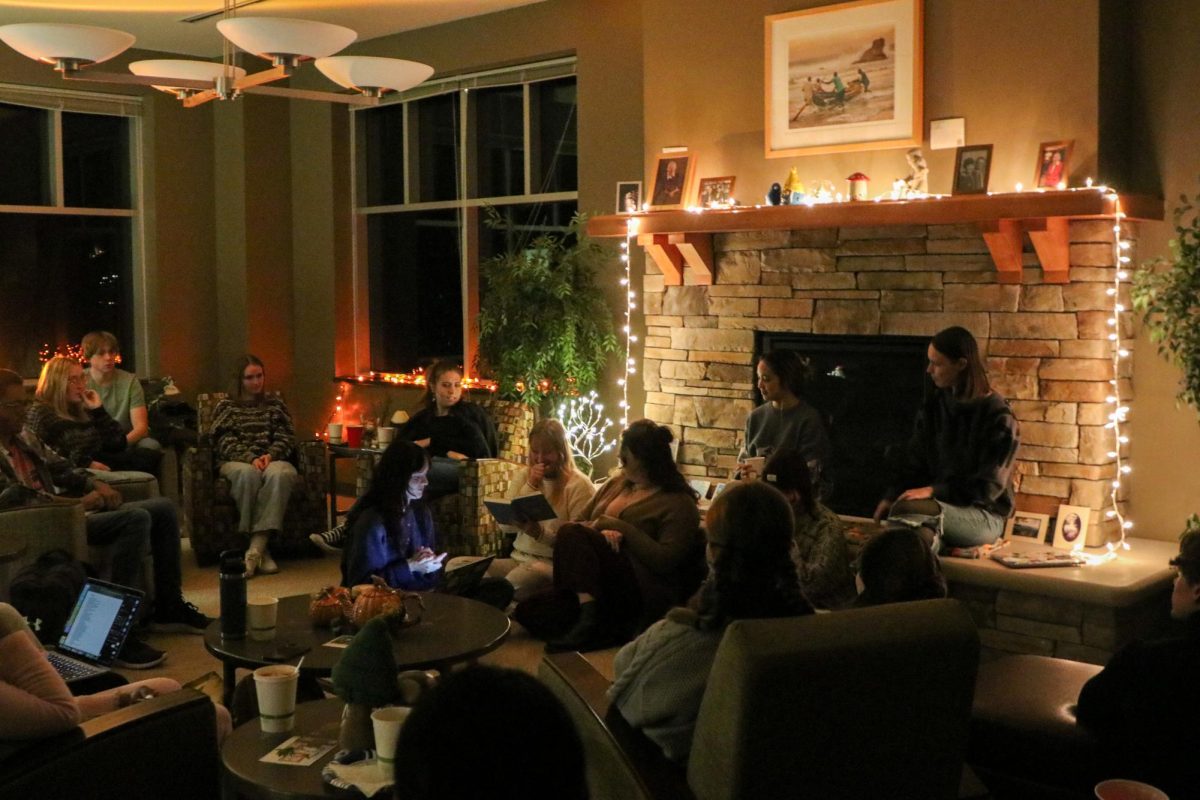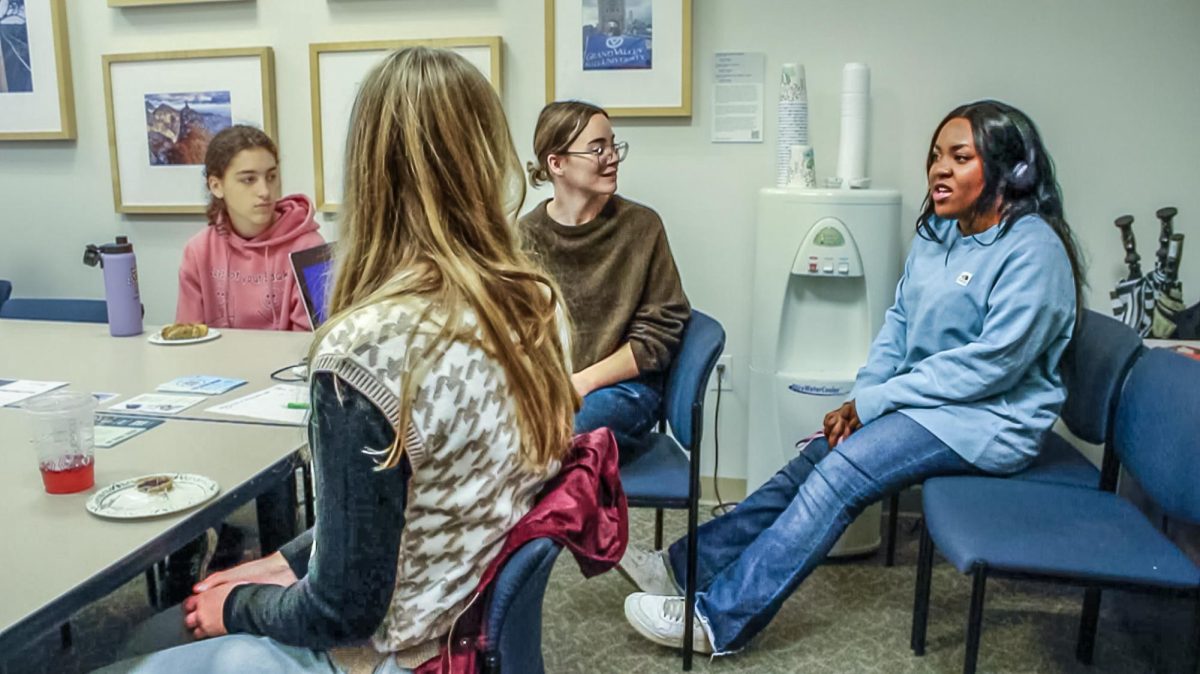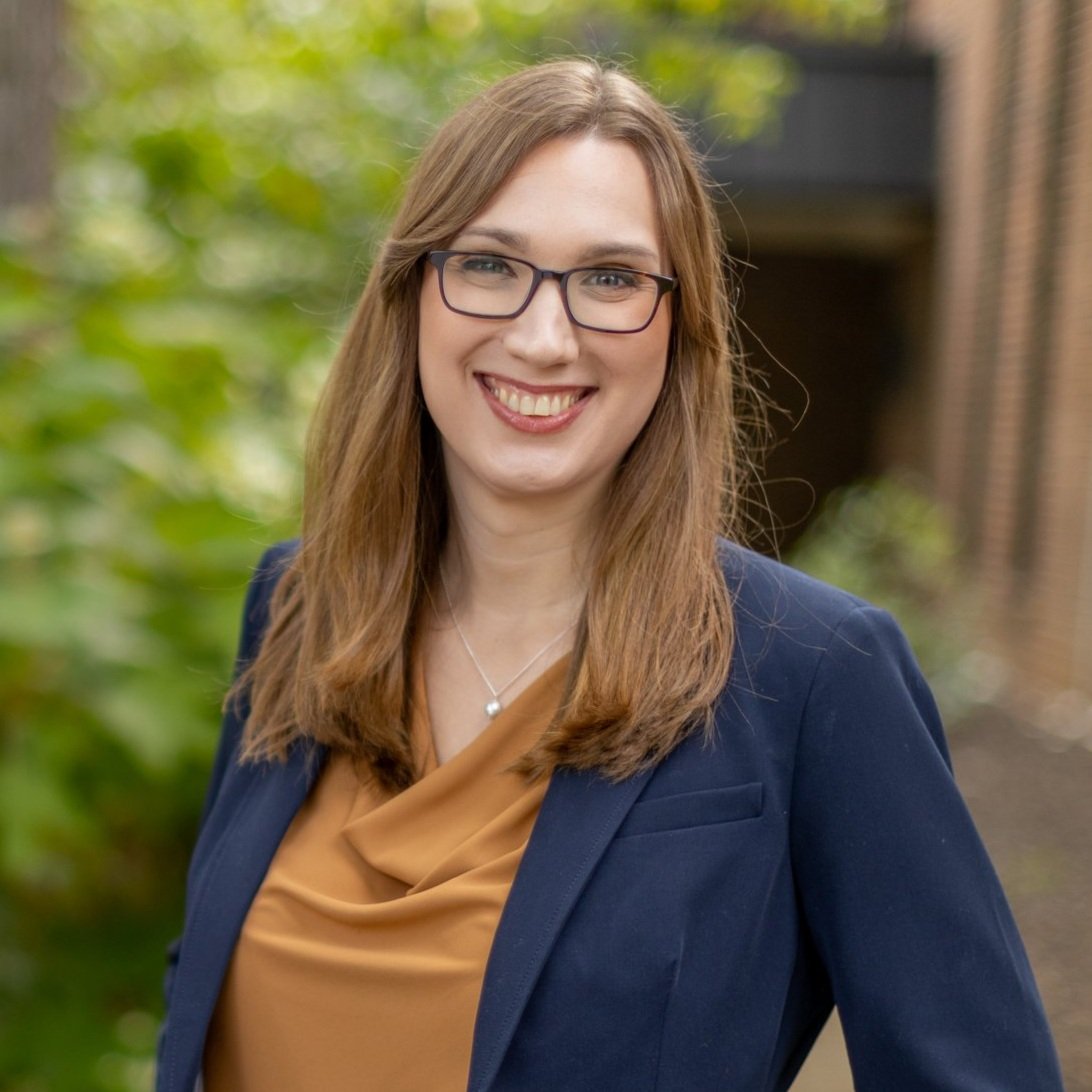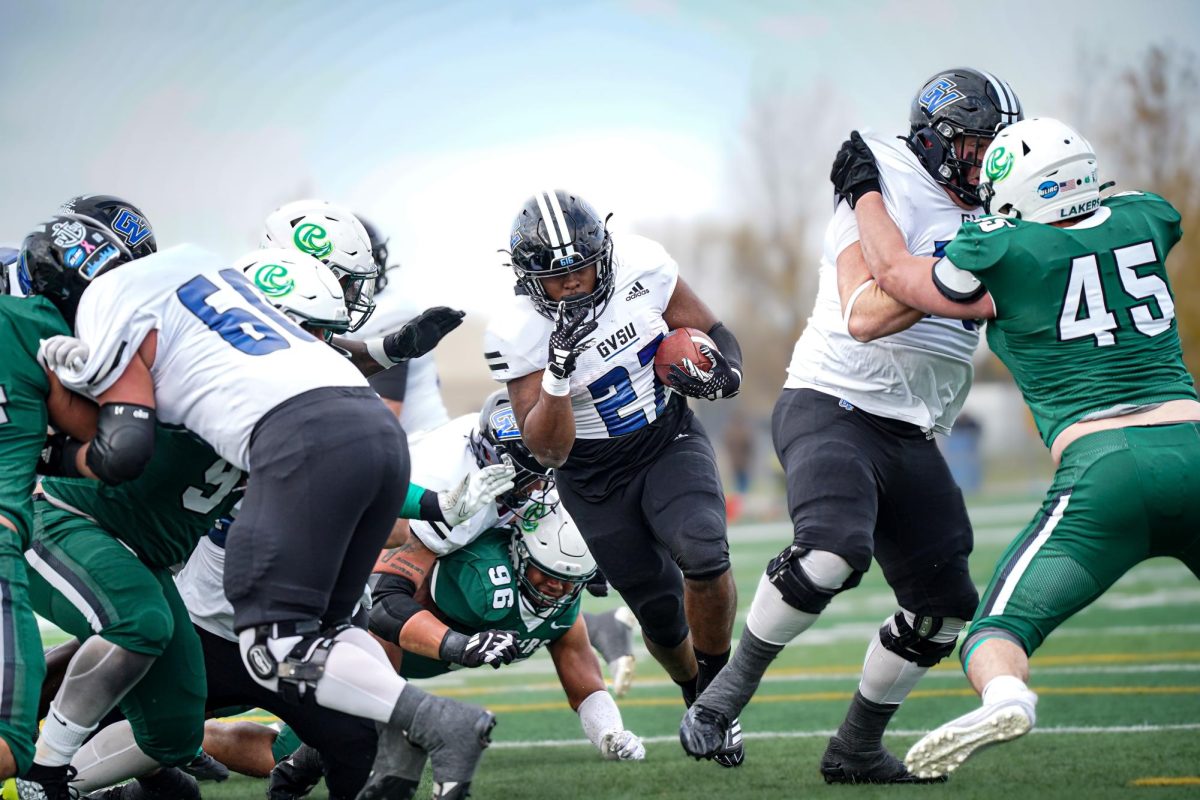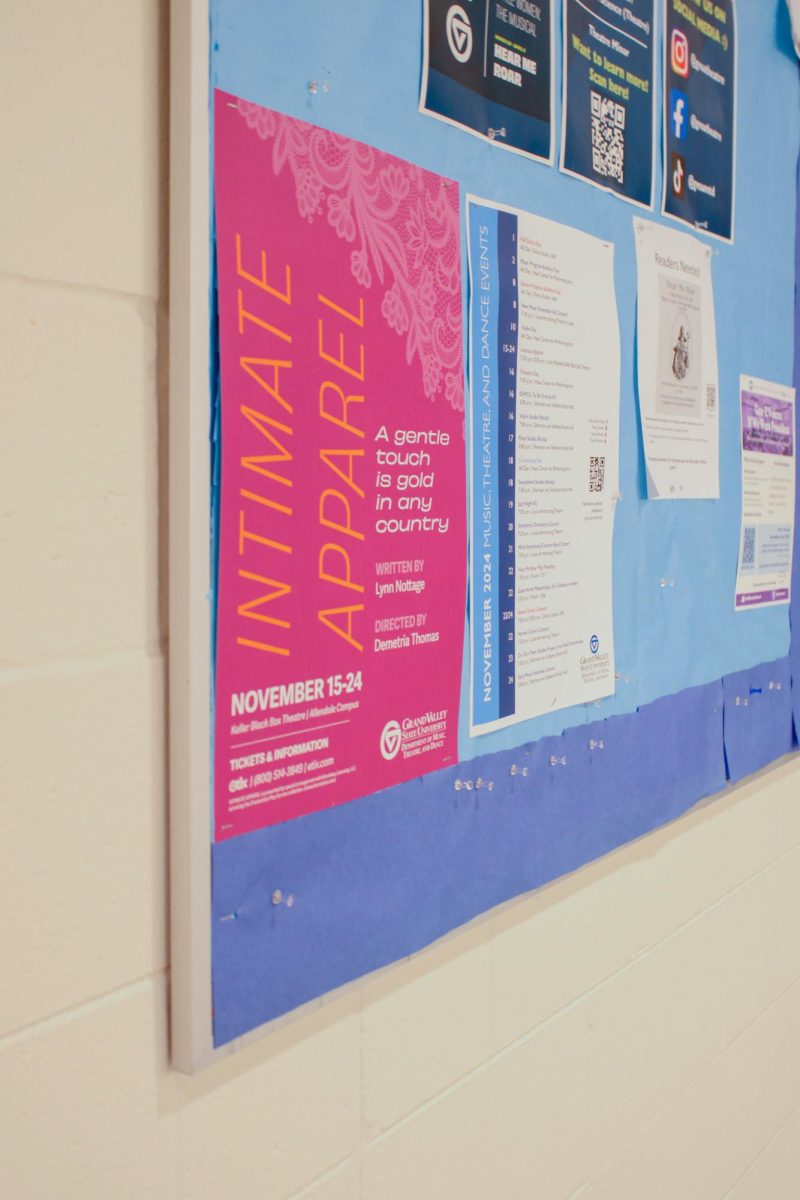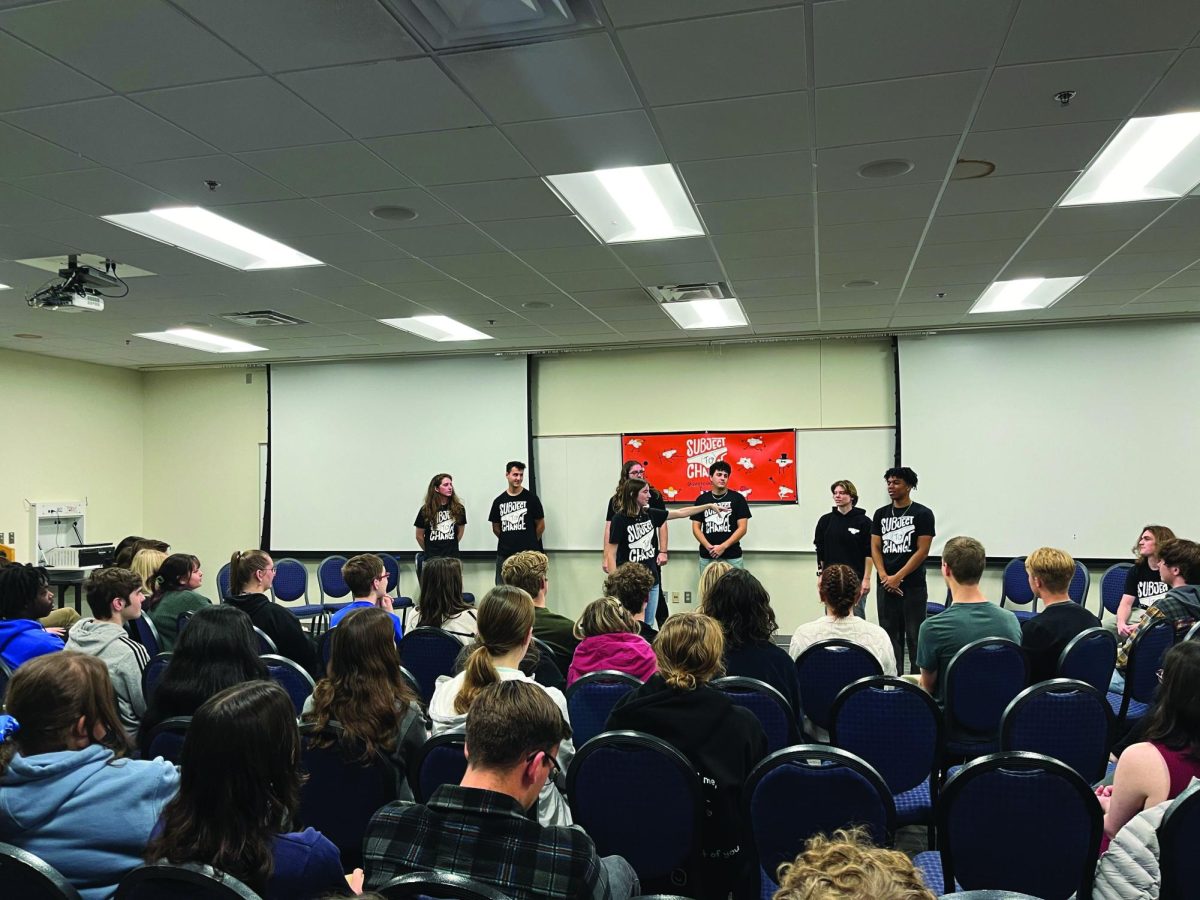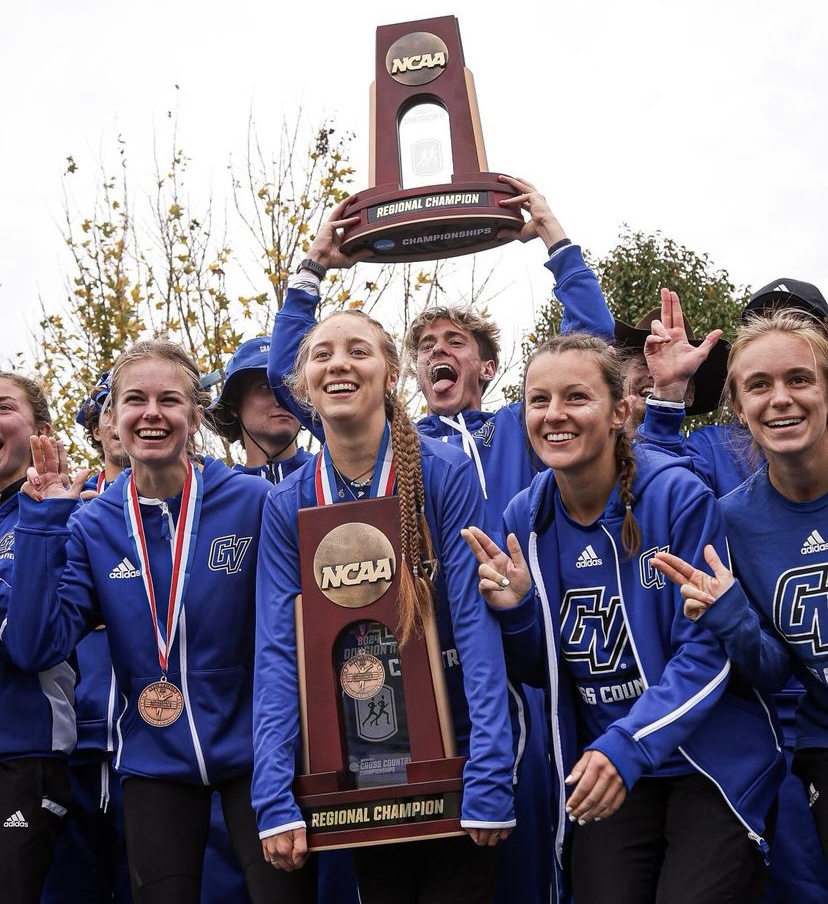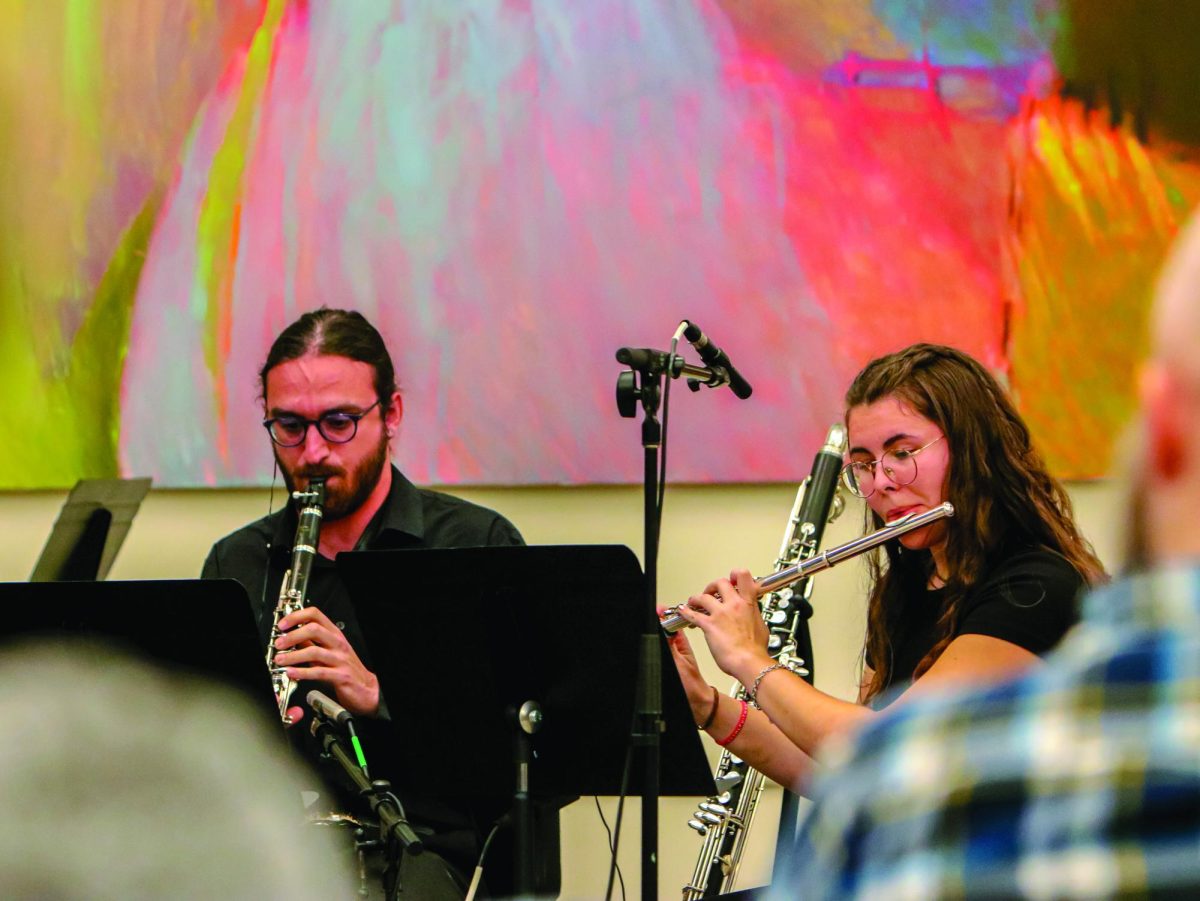Faculty and staff encouraged to refer students to Counseling Center

Danielle Sirles, doctoral intern at the counseling center, shares with students her Personal Growth Initiative on Oct. 13 in the Office of Multicultural Affiairs in Allendale, MI. Students were offered to attend the Professional Development Seminar: Midterm Stress Buster to help them relax before their midterms.
Nov 9, 2015
In an effort to provide support and resources to students, Grand Valley State University’s Counseling Center is working with faculty and staff with regard to the safety of their students.
As faculty and staff members interact with students on a day-to-day basis in their classrooms, they are often the first to notice when a student is facing academic or social problems.
Over 23 percent of the referrals that the GVSU Counseling Center receives is from faculty and staff.
Abraham Eapen, a licensed psychologist and the coordinator of group services at the Counseling Center, said faculty and staff are benefiting the students because they are telling them that there are resources and people that can help them at the center.
“That’s why we started the red folder, because faculty and staff members – like at the Rec Center or Student Services Center – help students be aware of the services on campus,” he said. “They help make aware that the services at the center are free, they note the range of services, explain who we are – like licensed psychologists, social workers and a nurse practitioner – and help students see the benefit of a first session.”
Eapen referenced the “red folder,” a guideline for faculty and staff for working with distressed and disruptive students. Beside listing emergency numbers for GVSU’s police department, the Dean of Student’s Office and the Counseling Center, the folder also lists indicators for distress.
Some possible signs for distress include marked change in academic performance, feelings of depression and hopelessness and verbal or written references to suicide. These signs then become an indicator for faculty and staff to speak with the student and contact resources.
Eapen noted that faculty and staff members also relay some of the different events they provide on campus, including QPR: Suicide Prevention Training, stress management programs and the Unnatural Causes documentary series, which aim to create more outreach and awareness of the Counseling Center’s presence at GVSU.
“We started awareness with QPR and the red folder, which has been around for the past two to three years, helps to create the awareness so that faculty and staff can refer to us,” he said. “There are some faculty and staff who will bring them directly to the center or encourage them to call us, depending upon the systems or the situation, or again will just let them know that services we offer – like if they have a personal concern and need someone to talk to, they are then encouraged to contact us and be aware.”
Alissa Hazlett, a sophomore at GVSU, said it makes her happy that the professors and staff at the university are paying attention to their students and are trying to help.
“It’s really awesome that they are actively watching us,” Hazlett said. “Coming into college, you just think that you are going to be another number, another face in a classroom. The fact that they want to help shows that professors and staff members are here to take care of us.”
The GVSU Counseling Center is located in Room 204 of the Student Services Building. To refer a student or for more information about counseling services, visit www.gvsu.edu/counsel.






